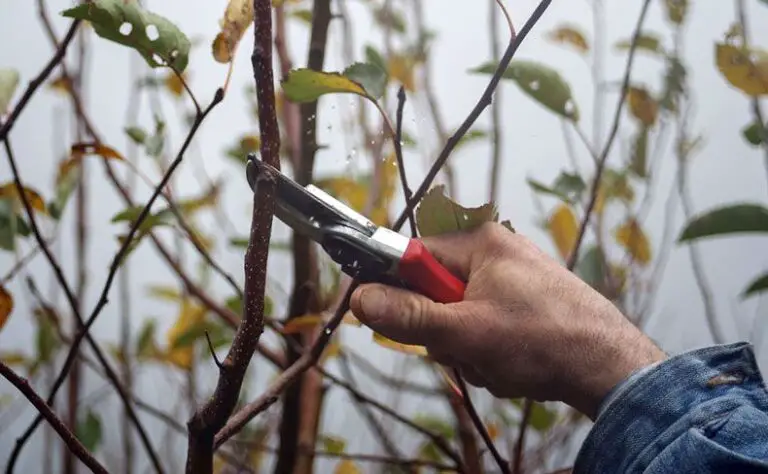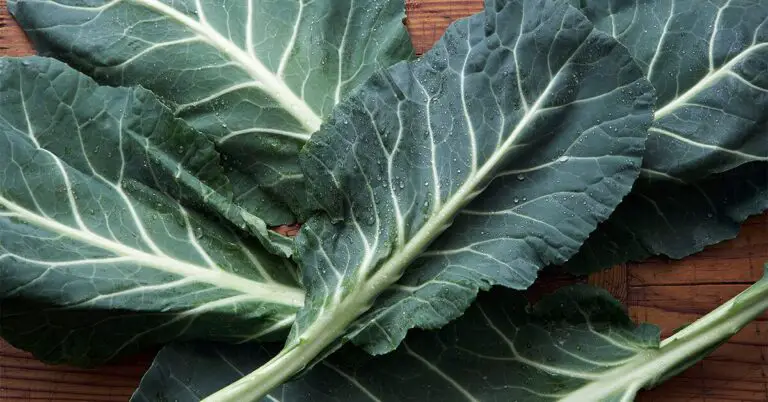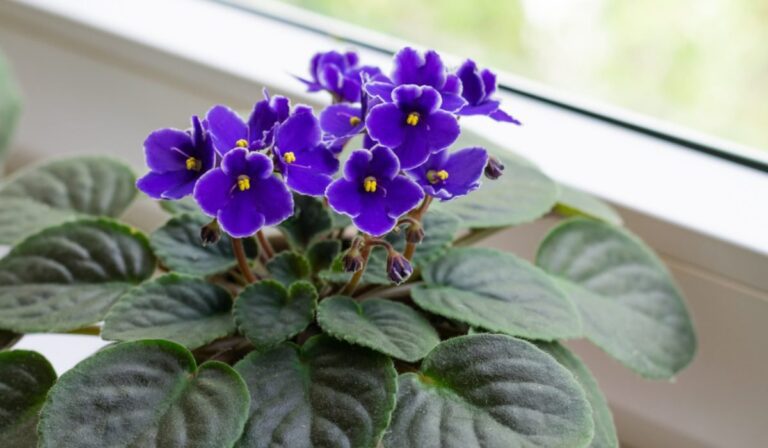How To Grow A Pineapple: Three Methods To Use
Table of Contents
Pineapple Varieties Suitable for Growing at Home
One of the joys of home gardening is being able to grow your own fruits and vegetables. If you’re considering growing pineapple in your own backyard, it’s important to choose the right variety that is suitable for home cultivation. While there are numerous pineapple varieties available, not all of them are ideal for growing in a home garden setting.

One popular pineapple variety that is well-suited for home cultivation is the Smooth Cayenne. This variety is known for its large fruit size, high sugar content, and excellent flavor. It is also disease resistant, making it a reliable choice for beginner gardeners. Another suitable pineapple variety for home growing is the Singapore Spanish, which produces sweet and juicy fruits with a distinctive tartness. These varieties, along with others such as the Golden Sweet and the Hilo, have shown great adaptability to different climates and can thrive in a home garden with proper care and attention.
Selecting the Right Pineapple for Propagation
When it comes to selecting the right pineapple for propagation, it is essential to choose a healthy and mature fruit that is free from any visible damage or abnormalities. Look for a pineapple with vibrant green leaves and a firm, plump body. Avoid fruits that have yellowing or brown leaves, as this may indicate disease or poor health.
Additionally, consider the variety of pineapple you wish to propagate. There are several popular varieties, each with its own unique characteristics. For example, the ‘Smooth Cayenne’ variety is known for its sweet and tangy flavor, while the ‘Queen’ variety is prized for its compact size and rich sweetness. Research the different pineapple varieties and choose one that appeals to your taste preferences and growing conditions.
Overall, selecting the right pineapple for propagation is a crucial step in ensuring the success of your homegrown pineapple plant. By choosing a healthy fruit and considering the variety that best suits your preferences, you set a solid foundation for a thriving pineapple plant.
Preparing Soil and Container for Planting Pineapple
When preparing soil and a container for planting pineapple, it is crucial to create the optimal conditions that will support the growth and development of the plant. Pineapples thrive in well-draining soil with a slightly acidic to neutral pH level, ideally ranging between 5.5 and 6.5. Before planting, it is recommended to test the soil’s pH level using a testing kit to ensure its suitability. If the soil is too alkaline, amendments such as sulfur or peat moss can be added to lower the pH.
In terms of soil composition, a sandy loam soil is preferred for pineapple cultivation. This type of soil provides good drainage while retaining enough moisture for the plant’s needs. Furthermore, incorporating organic matter such as compost or well-rotted manure into the soil can enhance its fertility and improve nutrient availability for the pineapple plant. This will promote healthy growth and yield.

When selecting a container for planting pineapple, choose one that is spacious enough to accommodate the plant’s root system. A container with a diameter of 12-16 inches and a depth of 12-14 inches is typically suitable. It is important to ensure that the container has sufficient drainage holes at the bottom to prevent waterlogging. This will allow excess water to drain away, preventing root rot and other moisture-related issues. Additionally, using a lightweight container will make it easier to move the plant and adjust its positioning to attain optimal sunlight exposure.
Planting Pineapple from the Crown Method
When it comes to planting pineapples from the crown method, there are a few key steps to follow to ensure successful propagation. Firstly, it is important to select a healthy pineapple with a fresh-looking crown. This crown will serve as the starting point for the new plant.
To begin the planting process, the crown should be carefully removed from the pineapple fruit, making sure to include a small portion of the flesh. It is then essential to allow the crown to dry for a couple of days, as this will help prevent rotting during the planting stage. Once dried, the crown can be planted into a well-draining soil mix or a suitable container, ensuring that the base of the crown is partially buried while the leaves remain above the surface.
| Step | Description |
|---|---|
| 1 | Select a healthy pineapple with a fresh green crown. |
| 2 | Twist or cut off the crown from the fruit. |
| 3 | Remove some of the lower leaves from the crown. |
| 4 | Allow the crown to dry for a few days to prevent rot. |
| 5 | Prepare a pot with well-draining soil or a planting bed. |
| 6 | Plant the crown in the soil, burying it up to the base. |
| 7 | Water the newly planted crown thoroughly. |
| 8 | Place the pot or planting bed in a sunny location. |
| 9 | Keep the soil consistently moist but not waterlogged. |
| 10 | After a few weeks, roots should develop, and growth begins. |
It is worth noting that pineapples generally thrive when provided with warm temperatures, adequate sunlight, and regular watering. Therefore, it is crucial to choose a sunny location for planting or provide artificial lighting if growing indoors. Furthermore, maintaining a consistent watering schedule, avoiding overwatering or underwatering, will help promote healthy root development. With proper care and attention, the planted pineapple crown should begin to take root and grow, eventually yielding a delicious homegrown pineapple for your enjoyment.
Growing Pineapple from the Top Method
Growing pineapple from the top method is an effective and popular technique for propagating this tropical fruit. The top method, also known as the crown method, involves using the leafy top portion of a pineapple to grow a new plant. This method is preferred by many gardening enthusiasts because it is relatively simple and can yield successful results.
To begin, select a healthy and ripe pineapple for propagation. Look for a pineapple with green leaves, firm flesh, and a sweet aroma. Once you have your pineapple, carefully remove the leafy top by cutting it off about half an inch below the base. It’s important to remove any leftover fruit flesh to prevent rotting or fungal growth.
After removing the top, allow it to dry for a couple of days. This drying period helps to reduce the risk of rotting and increases the chances of successful rooting. Once the pineapple top is dry, it’s time to plant it in a well-draining potting mix. Make sure the soil is moist but not waterlogged, as pineapple plants are susceptible to root rot.

Now gently press the base of the pineapple top into the soil, making sure it is secure and upright. Place the potted pineapple top in a warm and sunny location, as pineapple plants thrive in bright light. Keep the soil consistently moist, but avoid overwatering as it can lead to root rot.
In about two to three weeks, you should start to see roots forming from the base of the pineapple top. This is a positive sign that your plant is establishing itself. Over time, the pineapple top will begin to grow leaves and develop into a healthy pineapple plant.
Once your pineapple plant is well-established, you can transfer it to a larger container or even plant it in your garden if the climate permits. With proper care and regular fertilization, your pineapple plant will continue to grow and eventually bear fruit, rewarding you with delicious homegrown pineapples.
Propagating Pineapple through Sucker Method
The sucker method is a popular and effective way to propagate pineapple plants. Suckers, also known as offshoots or pups, are small shoots that grow from the base of the parent plant. These suckers can be carefully separated from the mother plant and planted individually to grow into new pineapple plants.
To propagate pineapple through the sucker method, start by identifying healthy and mature suckers that are at least 6 inches in length. Carefully remove the sucker from the parent plant by digging around its base and gently pulling it away. It’s important to ensure that the sucker has a good root system before separating it from the parent plant.
| Step | Description |
|---|---|
| 1. Select a sucker | Choose a healthy sucker (offshoot) from the pineapple plant. |
| 2. Prepare the sucker | Trim away any excess leaves from the base of the sucker. |
| 3. Allow to callus | Let the cut end of the sucker dry and callus for a few days. |
| 4. Plant the sucker | Plant the sucker in well-draining soil or potting mix. |
| 5. Provide care | Water the newly planted sucker regularly, ensuring the soil remains moist but not waterlogged. |
| 6. Monitor growth | Keep an eye on the sucker for signs of growth, indicating successful propagation. |
| 7. Transplant if needed | Once the sucker has developed roots and a strong base, it can be transplanted to a larger container or into the ground. |
| 8. Continued care | Continue to care for the propagated pineapple plant as it grows, providing appropriate sunlight, water, and nutrients. |
Once you have the sucker, prepare a well-draining potting mix or soil bed for planting. Make sure the soil is loose and friable, with good drainage. Plant the sucker in the soil, ensuring that the base of the shoot is covered and the leaves are exposed. Water the plant thoroughly after planting to promote root development.
By using the sucker method, you can easily multiply your pineapple plants and enjoy a bountiful harvest. With proper care and attention, these new plants will thrive and produce juicy and sweet pineapples right in your own backyard.
Providing Optimal Growing Conditions for Pineapple
Pineapples are tropical plants that thrive in warm climates, so providing optimal growing conditions is essential for successful cultivation. Temperature is one of the most crucial factors to consider. Pineapples prefer temperatures between 70°F and 85°F (21°C and 29°C). They can tolerate slightly lower temperatures, but prolonged exposure to cold can stunt their growth or even kill the plant. It is important to keep your pineapple plant in a location with consistent temperatures, away from any drafts or extreme fluctuations.
Another important aspect of providing optimal growing conditions is sunlight. Pineapples need at least six hours of direct sunlight each day to thrive. If growing indoors or in a region with limited sunlight, supplemental grow lights can be used to ensure they receive the necessary light intensity. However, it is crucial to strike a balance, as excessive light exposure can result in leaf scorching.

Aside from temperature and sunlight, proper soil condition is paramount for the healthy growth of pineapple plants. Well-draining soil with good moisture retention is essential. Sandy loam or loamy soil with a pH range of 4.5 to 6.5 is considered ideal for pineapples. Before planting, ensure the soil is enriched with organic matter and nutrients. This can be achieved by incorporating compost or well-rotted manure into the soil. Additionally, regular fertilization with a balanced fertilizer, high in potassium and phosphorus, will aid in the optimal growth and fruit development of the pineapple plant.
Maintaining the proper pH level of the soil is also crucial for pineapple cultivation. Acidic soil with a pH range of 4.5 to 6.0 is preferred. If your soil is alkaline, you can lower the pH by applying soil amendments such as peat moss or elemental sulfur. It is important to monitor the pH regularly and make adjustments accordingly, as an imbalanced pH can hinder nutrient uptake and affect the overall health of the plant.
In the next section of this article, we will delve deeper into the watering and fertilizing requirements for pineapple plants. Understanding these aspects will help create the optimal growing conditions that will ensure the health and productivity of your homegrown pineapple plants.
Watering and Fertilizing Pineapple Plants
Watering and fertilizing pineapple plants are crucial aspects of their care that directly impact their growth and productivity. Proper watering is essential to maintain the moisture balance in the soil and prevent the plant from drying out or becoming waterlogged. Pineapple plants prefer well-drained soil, so it is important to water them thoroughly but not excessively. As a general guideline, aim to keep the soil consistently moist, but not wet, throughout the growing season. Regularly check the moisture level of the soil by inserting your finger about an inch deep. If it feels dry, it’s time to water.
Fertilizing pineapple plants helps provide them with essential nutrients for healthy growth and optimal fruit production. The fertility requirements of pineapple plants vary depending on the age of the plant and the quality of the soil. When applying fertilizer, it is crucial to use one that is formulated specifically for pineapple plants, as the balance of nutrients may differ from other types of fertilizers. It is recommended to fertilize pineapple plants every two to three months during the active growing period, typically from spring to late summer. Follow the instructions on the fertilizer packaging for the appropriate dosage and application method. Over-fertilizing can be detrimental to the plants, so it is important to use fertilizers judiciously and avoid excessive applications.
Both watering and fertilizing pineapple plants require diligence and a keen understanding of the plant’s needs. By providing adequate watering and the right balance of nutrients, you can promote vigorous growth and enjoy a bountiful harvest of delicious homegrown pineapples. Stay tuned for the next section where we will explore effective strategies for protecting pineapple plants from pests and diseases to ensure their well-being throughout the growing season.
Protecting Pineapple Plants from Pests and Diseases
Pineapple plants are vulnerable to various pests and diseases, which can hinder their growth and productivity. Therefore, it is essential to take measures to protect these plants and ensure a healthy harvest. One common pest that affects pineapple plants is the pineapple mealybug (Dysmicoccus brevipes). These small insects feed on the plant’s sap, causing stunted growth and yellowing of leaves. To combat this pest, regular inspection of the plants is crucial. If mealybugs are detected, they can be manually removed by wiping them off with a cloth soaked in a mild soapy solution or using a soft brush. Additionally, beneficial insects such as ladybugs or lacewings can be introduced to the garden, as they feed on mealybugs and help control their population.
Another common issue that pineapple plants face is fungal infections, particularly root rot caused by Phytophthora spp. and Fusarium spp. These pathogens thrive in waterlogged soil, leading to wilting, browning of roots, and ultimately plant death. To prevent root rot, it is important to provide well-draining soil for pineapple plants and avoid overwatering. Soil sterilization can be beneficial before planting, as it helps eliminate any existing pathogens. Furthermore, maintaining proper spacing between plants promotes airflow and prevents the spread of diseases. In cases where root rot is encountered, affected plants should be promptly removed from the garden to prevent further contamination. Following these preventive measures can significantly reduce the risk of pest infestations and diseases, ensuring the health and productivity of your pineapple plants.
Harvesting and Enjoying Homegrown Pineapples
Harvesting and enjoying homegrown pineapples is an exciting and rewarding experience for any gardening enthusiast. When it comes to harvesting, it is important to wait until the pineapple is fully ripe before picking it. A ripe pineapple should have a sweet fragrance at the base and should yield slightly when gently squeezed.
To harvest the pineapple, use a sharp knife to cut it from the plant, leaving a small stub of the fruit attached to the crown. It is important to handle the pineapple with care to avoid bruising or damaging the fruit. Once harvested, allow the pineapple to sit at room temperature for a day or two to fully develop its flavor.
Once you have harvested your homegrown pineapple, it’s time to enjoy the fruits of your labor. Fresh pineapples can be enjoyed in a variety of ways, such as slicing it and eating it as is, adding it to fruit salads or smoothies, or even grilling it for a deliciously caramelized flavor. The sweet and tangy taste of homegrown pineapples is truly a treat that cannot be compared to store-bought ones. So sit back, savor the flavors, and enjoy the satisfaction of growing your own pineapple right at home.
Can any variety of pineapple be grown at home?
No, not all pineapple varieties are suitable for growing at home. Some varieties, such as the ‘Smooth Cayenne’ and ‘Golden Queen’, are better suited for home cultivation.
How do I select the right pineapple for propagation?
When selecting a pineapple for propagation, choose one that is fully ripe and has healthy, green leaves. Avoid selecting pineapples that have signs of disease or damage.
What kind of soil and container should I use for planting pineapple?
Pineapples prefer well-draining soil and a container that is at least 5-10 gallons in size. Use a potting mix that is rich in organic matter.
How do I plant pineapple using the crown method?
To plant pineapple using the crown method, remove the crown from a ripe pineapple and allow it to dry for a few days. Then, plant the crown in well-draining soil, burying it about halfway.
What is the top method of growing pineapple?
The top method involves cutting off the top of a pineapple, including a small portion of the fruit. This top is then planted in well-draining soil to grow a new pineapple plant.
How can I propagate pineapple through the sucker method?
The sucker method involves removing the suckers, or small shoots, that grow at the base of the pineapple plant. These suckers can be replanted to grow new pineapple plants.
What are the optimal growing conditions for pineapple?
Pineapples thrive in warm climates with temperatures between 65-95°F (18-35°C). They prefer full sun exposure and well-draining soil with a pH level of 4.5-6.5.
How often should I water and fertilize pineapple plants?
Pineapple plants should be watered regularly to keep the soil moist but not waterlogged. Fertilize them every 2-3 months with a balanced fertilizer to provide essential nutrients.
How can I protect pineapple plants from pests and diseases?
To protect pineapple plants, regularly inspect them for signs of pests such as mealybugs or scale insects. Use organic pest control methods or insecticides if necessary. Avoid overwatering, as it can lead to fungal diseases.
When is the best time to harvest homegrown pineapples?
Homegrown pineapples are typically ready for harvest when the fruit turns golden in color and develops a sweet aroma. This usually occurs 6-8 months after planting.

Pallavi Gupta is a burgeoning writer at SouthElMonteHydroponics, blending her passion for data analysis with a keen interest in biotechnology. Currently pursuing a Bachelor’s in Biotechnology at Amity University, Pallavi delves into the intricacies of life sciences while gaining hands-on experience in the exciting world of data analysis. Her unique background provides a fresh perspective on hydroponic farming, as she explores the intersection of biotechnology and sustainable agriculture. Through her writing, Pallavi aims to bridge the gap between data-driven insights and innovative farming practices, inspiring others to harness technology for a greener future.






